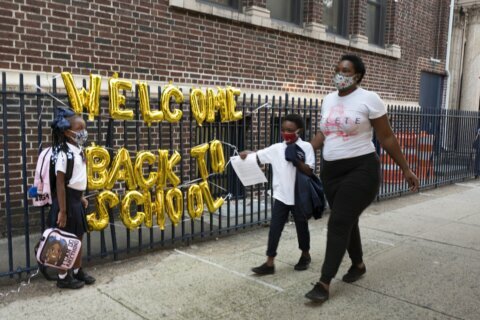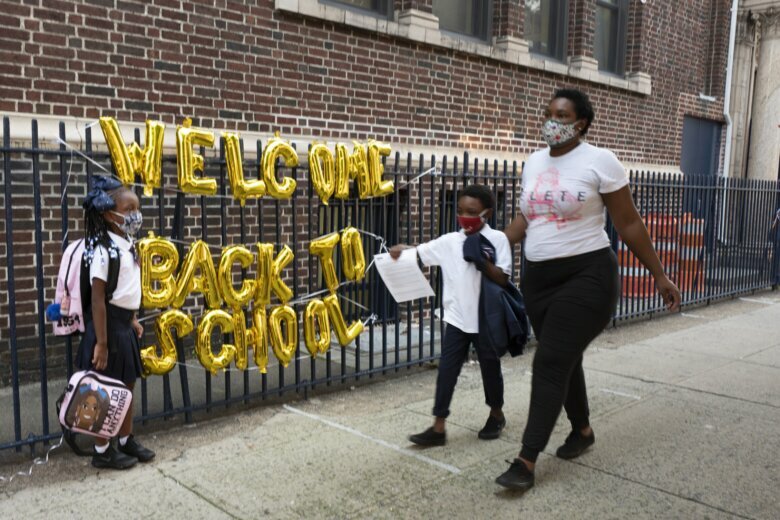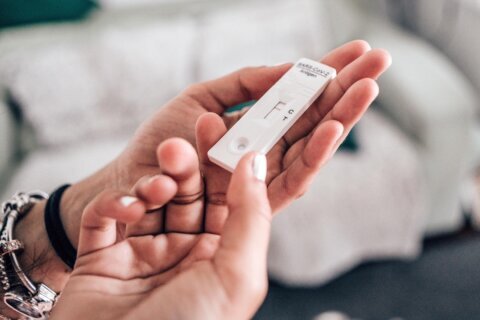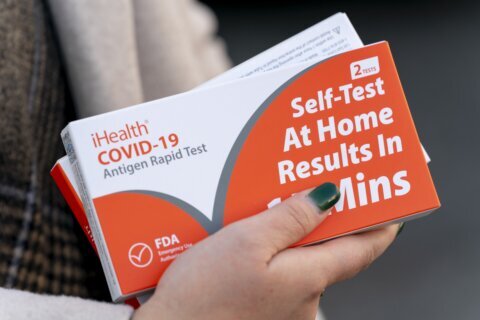
Our children are getting sick from the coronavirus. Covid-19 infections have increased exponentially, with nearly 500,000 new cases in the past two weeks, according to the American Academy of Pediatrics. This represents a 240% increase since early July. Children now constitute 29% of all new cases nationwide. Many of the new infections are in kids under 12, too young to be vaccinated at this time.
This all occurs as schools are returning for in-person instruction around the country. Many parents are wondering: Are schools safe? What happens if they don’t follow the public health precautions as proscribed by the US Centers for Disease Control and Prevention? Should parents who can pull kids out of school, or are there other methods to help reduce risk?
To help answer these questions, we spoke with CNN Medical Analyst Dr. Leana Wen. Wen is an emergency physician and visiting professor of health policy and management at the George Washington University Milken Institute School of Public Health. She’s also author of a new book, “Lifelines: A Doctor’s Journey in the Fight for Public Health,” and the mother of two young kids.
CNN: We’ve discussed this before, but here we are at the start of another school year during the pandemic. As schools reopen, do you think in-person classes are safe from a Covid-19 perspective?
Dr. Leana Wen: Numerous studies have shown that schools can have a lower risk of coronavirus transmission than the surrounding community if they follow public health guidance to use a “layered mitigation strategy.” Think of this layered protection method as wearing layers in the winter. When it’s cold outside, we need multiple layers to keep us warm. If we remove one layer, we need to add additional layers. When it’s extremely cold, we need even more layers. They all work together, and the more layers, the warmer you are.
Consider the different layers that can help keep schools safe. One is if everyone eligible to be vaccinated is vaccinated. That’s parents, teachers, staff and all adolescents age 12 and older. Parts of the country that have higher vaccination rates also have lower infection rates among children.
Another layer is testing. The CDC recommends at least weekly testing for unvaccinated children in areas of substantial or high transmission. Testing itself doesn’t prevent an infection from occurring, but it does detect infections, and if done frequently enough, it prevents that infected person from going to public settings where they could infect others. The nation’s second-largest school district, Los Angeles Unified School District, requires weekly testing of all students and teachers.
Improved ventilation also helps, as does indoor masking, keeping kids in cohorts, handwashing, making sure children with symptoms stay home, contact tracing, and other key public health measures. The more widespread Covid-19 is in your community, the more measures the school will need to prevent transmission within the school.
CNN: What should parents do if their child’s school is in an area of high virus transmission, but doesn’t have a lot of these measures? Many school districts are prohibited from even requiring masks.
Wen: This is difficult for the parents, students and teachers in this circumstance. They know what it takes to make schools safer, and to have these tools taken from them is, I believe, unconscionable.
That said, parents are not helpless here. One thing I would strongly urge is to talk to other parents in your child’s school. There is strength in numbers. Can you try talking to the administration together to express your concerns? Remember the concept of layered protection. If mask requirements are a no-go for whatever reason, can there be other measures put in? For example, can the school supply weekly or twice-weekly testing for all students?
I’d also suggest talking to other parents in your child’s class. If enough of you feel the same way, you could band together and insist that your children wear masks when indoors. You can make mask-wearing the norm in your child’s class. Consider speaking to the teacher to see if all the kids who are wearing masks can sit together with one another. That also helps to reduce risk for your child.
Remember, too, that the quality of the mask your child uses really matters. A simple cloth face covering may not be enough, especially with the more contagious Delta variant dominant at this point. A three-ply surgical mask will be more effective than a cloth mask. If your child is comfortable with an N95, KN95 or KF94 mask, these will provide even better protection. The best mask, though, is the one that your child can consistently and comfortably tolerate.
CNN: At what point should parents be concerned enough that they pull their kids out of school?
Wen: There is no one-size-fits-all answer here. I’d encourage parents to think about the health of their child and household; the available alternatives; the importance of in-person schooling to their child; and what other risks can be reduced.
First, consider the health of your child and that of others in your household. If your child is generally healthy and everyone living with you is fully vaccinated, that could be considered differently than if your child is immunosuppressed or if you have a particularly vulnerable family member. Of course, if your child is 12 or older, getting them vaccinated will be crucial to protect them and the rest of the family, too.
Second, what are the alternatives? For many parents, in-person schooling is essential because they have to work. There may also be no other choices. Virtual learning is not offered in all schools, and a lot of parents may not have the choice to transfer their child to a school that offers more safety precautions.
Third, many kids have really suffered without in-person instruction. In-person school may be necessary for the child’s emotional health, as well their continued development.
If it’s really crucial for your child to be in school, you should look to see what other risks can be reduced. Yes, it’s true that pulling your child out of school can reduce risk, but that should be a last resort. Especially since school is essential to so many parents and children, you should see what other risks you can try to reduce instead.
Remember that risk is cumulative. If your unvaccinated child needs to be in school, work to reduce risk in other ways. Don’t take part in indoor playdates — instead, have them all outdoors. Don’t let down your guard in extracurricular activities — they should use the same precautions as you would use during school. Don’t have sleepovers and indoor pizza parties — it would be a shame to be so careful during school hours only to have your child be infected during after-school social activities. And parents can reduce their risk, and, for example, always wear masks indoors when around people of unknown vaccination status.
CNN: Are there any other steps you’d encourage parents to take to reduce risk in schools?
Wen: One of the highest-risk settings during school hours is during mealtime, when kids aren’t wearing masks and could be crowded together. Ask what provisions your school can offer during lunch and snack time. Might kids be able to eat outdoors? Could that be a choice offered to some kids?
I’d also ask about quarantine protocols. How will you know if another child tests positive? Is everyone in the class required to quarantine, or is testing an option that can reduce the need for a long quarantine — and therefore a long out-of-school time? This is another case where rapid, frequent testing is helpful: What kind of testing options are made available for students and their families?
CNN: What about 10-year-olds and 11-year-olds who aren’t old enough to get vaccinated? Should parents try to sneak them in to get them the vaccine, or should they wait?
Wen: The CDC and the Food and Drug Administration have advised that parents should not vaccinate kids who are too young to get the Covid-19 vaccine. Studies for young children are still being done. Former FDA commissioner Dr. Scott Gottlieb estimates that a best-case scenario is that vaccines for children ages 5 to 11 years old could be authorized by Halloween. That’s not so far in the future.
It’s best to wait until we have the data that confirm the vaccine is safe and effective in this younger age group. Note that the dose being tested in this group is lower than the dose given to 12-year-olds and above, so that’s another reason to wait.
In the meantime, parents and children should take additional precautions, knowing that this is a particularly dangerous time for children during the pandemic, but that there are steps we can all take to reduce kids’ risk, while keeping them within in-person school.








